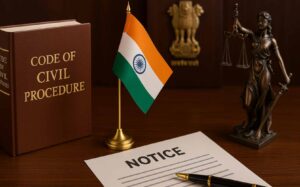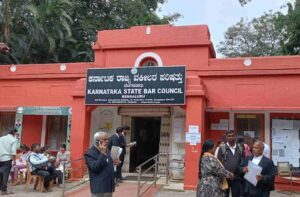Order I of the Code of Civil Procedure (CPC) addresses the essential rules concerning the parties involved in civil suits.
It lays out the guidelines for joining parties as plaintiffs and defendants, the process for handling misjoinder or non-joinder of parties, and specifies other procedural rules that aim to ensure justice and efficiency in civil litigation.
What is Order I of the CPC?
Order I of the CPC pertains to the parties who can participate in a civil suit, either as plaintiffs (those bringing the case) or as defendants (those responding to the case).
These rules are crucial to avoid unnecessary complications in a trial, ensuring clarity and expedience. Let’s break down the rules step-by-step to understand how these procedures function.
Who Can Be Joined as Plaintiffs (Rule 1)
Under Rule 1, multiple plaintiffs can join in one suit if:
- They claim relief for the same act, transaction, or related series of acts.
- Common questions of law or fact would arise if they filed separate suits.
This rule enables people with similar legal grievances to combine their cases, avoiding multiple, potentially repetitive lawsuits.
For instance, if a group of people suffer the same loss from a single act, such as breach of contract, they can file together, reducing the court’s workload and consolidating the legal process.
Power of the Court to Order Separate Trials (Rule 2)
If the court feels that having multiple plaintiffs in one case might delay or complicate the trial, it can order separate trials or ask plaintiffs to choose if they wish to proceed individually.
This is done to ensure that a complex case does not lead to unnecessary delays and that each party’s claim receives fair attention.
Who Can Be Joined as Defendants (Rule 3)
Rule 3 allows multiple defendants to be joined in one suit if:
- The relief being sought arises from the same act, transaction, or a series of related acts.
- If separate suits were filed, common questions of law or fact would come up.
This rule is vital in cases where the actions of multiple people contribute to the dispute or harm caused.
For instance, if several contractors are accused of causing damage to property in a single incident, they can be jointly sued rather than filing multiple cases for each contractor.
Separate Trials for Defendants (Rule 3A)
Similar to Rule 2, Rule 3A permits the court to separate trials for defendants if combining them might cause delays or confusion.
The court can decide that handling each defendant’s case individually would better serve justice.
Judgments for Joint Plaintiffs and Defendants (Rule 4)
Rule 4 enables the court to issue a judgment in favor of or against any of the plaintiffs or defendants as appropriate.
This rule is beneficial because it allows the court to resolve parts of the case independently. If a certain plaintiff has a valid claim, the court can issue a judgment without needing to settle the entire case at once.
Defendants’ Interest in the Suit (Rule 5)
Rule 5 specifies that not every defendant needs to have an interest in all the reliefs claimed in a suit.
This provision allows for cases with multiple defendants to proceed even if some defendants are only relevant to certain parts of the case, facilitating a more flexible and inclusive approach to handling complex disputes.
Joinder of Parties Liable on the Same Contract (Rule 6)
Under Rule 6, a plaintiff has the choice to join all or any persons responsible for a single contract, such as promissory notes or bills of exchange.
This rule is especially useful in cases involving financial transactions where multiple parties are responsible under one contract, allowing plaintiffs to address all liabilities within one suit.
When Plaintiff is Unsure of Liable Defendants (Rule 7)
Rule 7 allows plaintiffs who are uncertain about the liable parties to join multiple defendants in the suit. The court can then determine which defendants are responsible and to what extent.
This rule helps the plaintiff by eliminating guesswork, ensuring that all potential parties are included in the initial proceedings.
Suing or Defending on Behalf of Others with Shared Interest (Rule 8)
Rule 8 allows a single person or a group to sue or defend on behalf of a larger group with the same interest, provided the court grants permission.
In cases where there are numerous people affected by the same issue, this rule streamlines the process by allowing one or a few representatives to act on behalf of the whole group.
The court may notify others through personal service or public advertisements to ensure everyone is informed.
Permitting an Interested Person or Group to Present Opinions (Rule 8A)
Rule 8A enables the court to allow interested parties, even if they aren’t formal parties to the suit, to present their opinions on legal matters of public interest in the case.
This rule upholds the principle of justice by ensuring that the court has access to all relevant perspectives, especially if they impact the public.
Misjoinder and Non-Joinder of Parties (Rule 9)
Under Rule 9, a case will not be dismissed merely because of misjoinder (wrong parties added) or non-joinder (necessary parties left out).
The court is empowered to resolve the matter based on the actual parties present. However, the rule includes a critical exception—if a necessary party is missing, the court may insist that they be added.
Suit in the Name of the Wrong Plaintiff (Rule 10)
Rule 10 addresses cases where a suit is filed by the wrong plaintiff or it’s unclear if the correct person has filed the case.
The court can allow a different person to be added or substituted as the plaintiff if it’s a bona fide mistake.
The court can also add or remove any party to ensure that all relevant persons are included, ensuring a fair trial.
The Court’s Power to Involve Pleaders (Rule 10A)
In cases where an interested party lacks a pleader, Rule 10A empowers the court to request any pleader to represent them and present their case.
This ensures that all parties affected by the suit have their interests represented in court.
Conduct of the Suit (Rule 11)
Rule 11 gives the court discretion to assign responsibility for conducting the suit to any party or parties it finds suitable.
This rule helps manage the legal process efficiently, especially in complex or multifaceted cases.
Appearance by One Plaintiff or Defendant for Others (Rule 12)
This rule permits one or more plaintiffs or defendants to appear, plead, or act on behalf of the others if they have received written authorization.
This is particularly useful in cases involving multiple parties, where it may be difficult for all to participate actively in court proceedings.
Raising Objections on Misjoinder or Non-Joinder (Rule 13)
Rule 13 requires that objections regarding the misjoinder or non-joinder of parties must be raised early in the proceedings.
If objections are not raised at the appropriate time, they are considered waived.
This rule helps streamline the legal process by preventing parties from delaying proceedings over minor technicalities.
Practical Implications of Order I
The provisions in Order I ensure that:
- Efficiency: By allowing multiple plaintiffs and defendants to join, the court reduces unnecessary litigation, saving time and resources.
- Flexibility: The court can separate trials or assign conduct of cases as needed, adjusting to the case’s complexities.
- Inclusivity: Rules like Rule 8 and Rule 8A promote inclusivity by allowing groups and interested parties to participate.
- Fairness: By allowing the correction of parties (Rules 9 and 10) and joining all potentially responsible parties, Order I ensures that cases are adjudicated fairly, with no one unjustly excluded.
Verdict
Order I of the CPC plays a critical role in civil litigation by managing the joining of parties and ensuring that cases are resolved efficiently and justly.
It empowers the courts to handle cases with flexibility, encouraging consolidation when possible and allowing separation when necessary to avoid delays.
This structure helps reduce the burden on the courts while ensuring that justice is served by involving all necessary parties and addressing all relevant issues in a single, coherent process.















